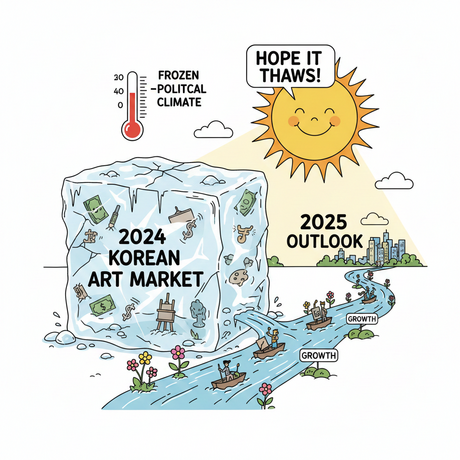Adam Štěch lives every architecture lover's dream. The Prague-based magazine editor, curator, and design historian spends part of each year traveling the world, photographing 20th-century architecture – from famous landmarks to hidden gems – and sharing these images on Instagram at okolo_architecture. Over the years, he has captured more than 150,000 photographs documenting over 10,000 buildings across 40 countries.
While some of these buildings are open to the public, Štěch often contacts residents directly to gain access to private spaces. "I write emails and messages through social media, but often I have to send handwritten letters by mail, without a name, because the only thing I know is the address," he explains from a wood-paneled bar in the Czech capital. His followers value this unique access, as well as his perspective: "I look at the buildings not as a photographer, but as a historian."
This summer marks the 100th anniversary of the Exposition Internationale des Arts Décoratifs et Industriels Modernes (International Exhibition of Modern Decorative and Industrial Arts), a massive fair that covered 57 acres in central Paris and gave the Art Deco movement its name. To celebrate this milestone, Štěch shared the stories behind his images of some of his favorite Art Deco buildings from around the world. These photographs take us from São Paulo to Tokyo to Budapest, revealing how Art Deco architecture transformed as it spread across the globe and reached its peak in the United States in the late 1920s and early 1930s.
When most people hear "Art Deco," they automatically think of the Roaring Twenties, the Jazz Age, and the New York City skyline dominated by the Empire State and Chrysler Buildings. It feels distinctly American. However, the movement's roots began much earlier, in France. The 1925 Expo was originally scheduled for 1914 but was delayed for over a decade by World War I. "It's easy to look at the 1920s in isolation as this exciting party time," Zorian Clayton, curator of prints at London's Victoria & Albert Museum, told me. "But the context is that it follows the trauma of the war, so it's really about rebuilding the world, and asking in whose image it should be rebuilt."
By 1925, this idea of rebuilding the world had become contested territory. The French goal in hosting the Expo was to reassert their country as the pinnacle of taste, design, fashion, and style in the postwar era. However, they had a fairly rigid idea of what they wanted that taste to be. The organizing committee tried to reject a pavilion designed by Le Corbusier, the Swiss-French architect and designer, considering it too stark and severe. Le Corbusier, who would become one of the leaders of the Modernist movement, said of the fair: "Decorative art, as opposed to the machine phenomenon, is the final twitch of the old manual mode, and is a dying thing. Our pavilion will contain only standard things created by industry in factories and mass-produced."
In many ways, Le Corbusier had the last laugh. When World War II began and austerity started to grip Europe, Art Deco was looked down upon and seen as extremely over-decorated, Clayton explained. Its associations with luxury and leisure were out of step with the prevailing mood. Even today, while Modernism of the Corbusian variety is generally respected, Art Deco is sometimes viewed as frivolous and unserious.
Yet a century after the 1925 Expo in Paris, it's clear that Art Deco made its mark in a profound way. "Over the course of just a few decades, it produced these extraordinary, rather fabulous creations," Clayton told me. The style also traveled around the world. Today you can see Art Deco's influence not just in Europe and North America but in India, North Africa, Latin America, and Australasia. "It's amazing how rapidly it goes around the world and how each region has its own way of interpreting it," Clayton said. "It's truly a global style."
At the same time, Art Deco impacted design and art across virtually every medium imaginable. "It influences fashion, jewelry, car design, furniture, architecture, graphic design, theater, film, and painting," said Clayton. "Basically everything." And, as these photographs by Štěch remind us, arguably the biggest and most enduring impression left by Art Deco was on our cityscapes and the built environment: the apartment buildings we live in, the doorways we walk through, the skyscrapers we gaze up at.
Štěch's photographs showcase this global reach and lasting impact. In Brussels, which he calls "definitely the capital of European Art Deco," the Fondation Médicale Reine Elisabeth stands as a testament to the style's bold use of color and materials. Designed by Belgian architect Henry Lacoste, this medical research institute from the 1920s features colorful stripes made from an opaque glass called marbrite. "It's a semi-public building," says Štěch. "I went in and there was nobody there, so I wandered around photographing."
In the woods of Poigny-la-Forêt, west of Paris, Štěch discovered what he calls "one of my best discoveries" – a hunting lodge designed by relatively unknown architect Pierre Petit for Maurice Philbois, founder of a shoe company, and completed in 1937. Štěch saw it was for sale, arranged a visit with an estate agent, and spent a day taking photos and chatting with the chain-smoking owner. "It was all so well preserved," says Štěch.
Budapest's Piston House, a residential building designed by local architects Béla Hofstätter and Ferenc Domány and completed in 1938, represents the style's evolution. "It's on the edge of Art Deco and Modernism," says Štěch. The central staircase is its most striking feature, with a glass cylinder containing the elevator visible at the bottom of his photograph.
In Tokyo, the building now known as the Tokyo Metropolitan Teien Art Museum was built in 1933 as the residence of Prince and Princess Asaka. They were introduced to Art Deco during a stay in France and hired French architects and decorators to create their home in the style. An etched door was created by glass artist Max Ingrand, whose work Štěch has also photographed in France and Venezuela.
Even small details received the Art Deco treatment. At the hotel Le Splendid in Dax, in southwest France, designed by architect André Granet, custom door handles showcase the movement's attention to detail. "Back then, there weren't as many companies mass-producing such elements, so it was standard practice to design and produce even door handles from scratch," says Štěch, who recommends a stay at the hotel.
Belgian architect Joe Ramaekers designed numerous apartment buildings in Brussels, as well as the cathedral in Boma in what is now the Democratic Republic of the Congo. Ramaekers was heavily influenced by the Amsterdam School, a style of architecture characterized by brickwork and rounded edges, seen alongside beautiful green-glazed tiles in Štěch's photographs.
Perhaps nowhere is Art Deco's grandeur more evident than at Eltham Palace in Greenwich, London. In the 1930s, eccentric millionaires Stephen and Virginia Courtauld hired Swedish architect Rolf Engströmer to create the entrance hall for their home, which is now open to the public. The circular rug is almost 20 feet in diameter, designed by textile designer Marion Dorn. "For me, it's the best Art Deco interior in Britain," says Štěch.
These images and stories reveal how Art Deco became more than just a design movement – it became a global language of modernity, luxury, and optimism that continues to influence our built environment today. From the skyscrapers of New York to the residential buildings of Brussels, from the palaces of Tokyo to the hunting lodges of France, Art Deco left an indelible mark on the 20th century and beyond.
As we mark the centennial of the movement that gave Art Deco its name, Štěch's photographs serve as a reminder of its enduring power to inspire and delight. Whether in grand public buildings or intimate private spaces, in famous landmarks or hidden gems, Art Deco continues to shape how we experience and understand the spaces around us.





























